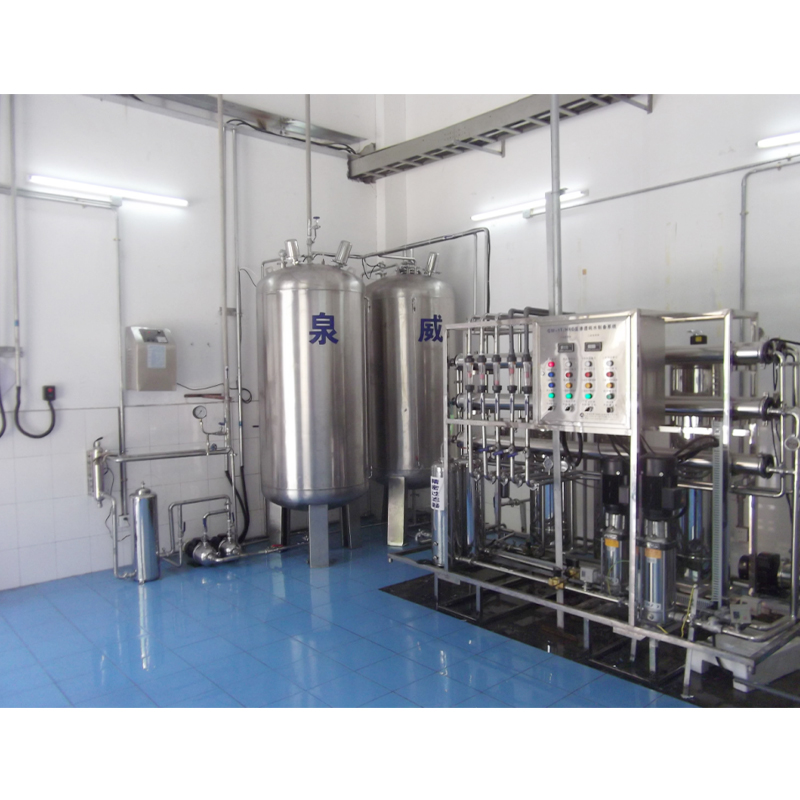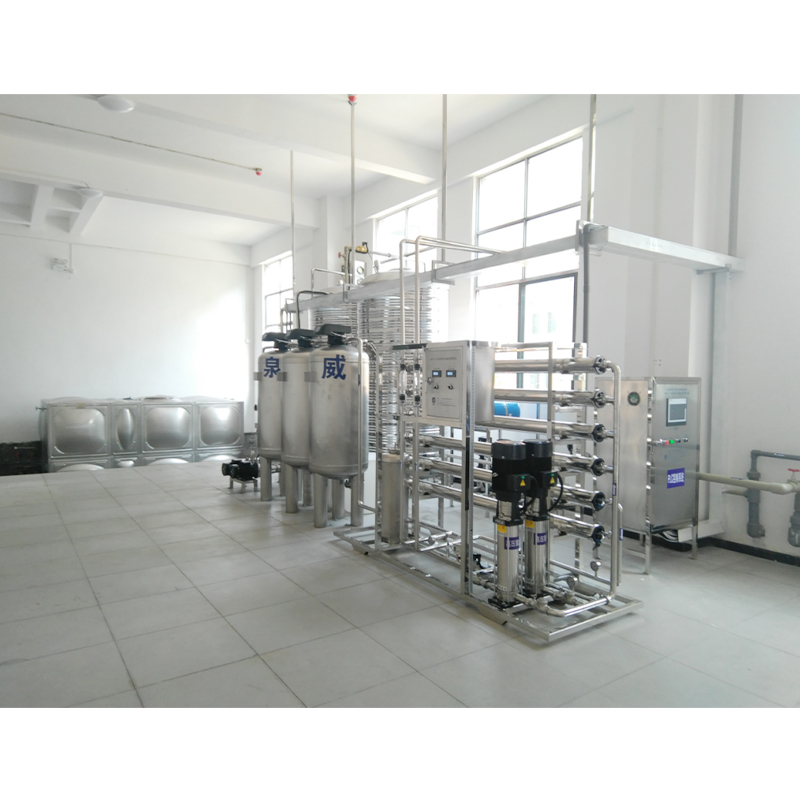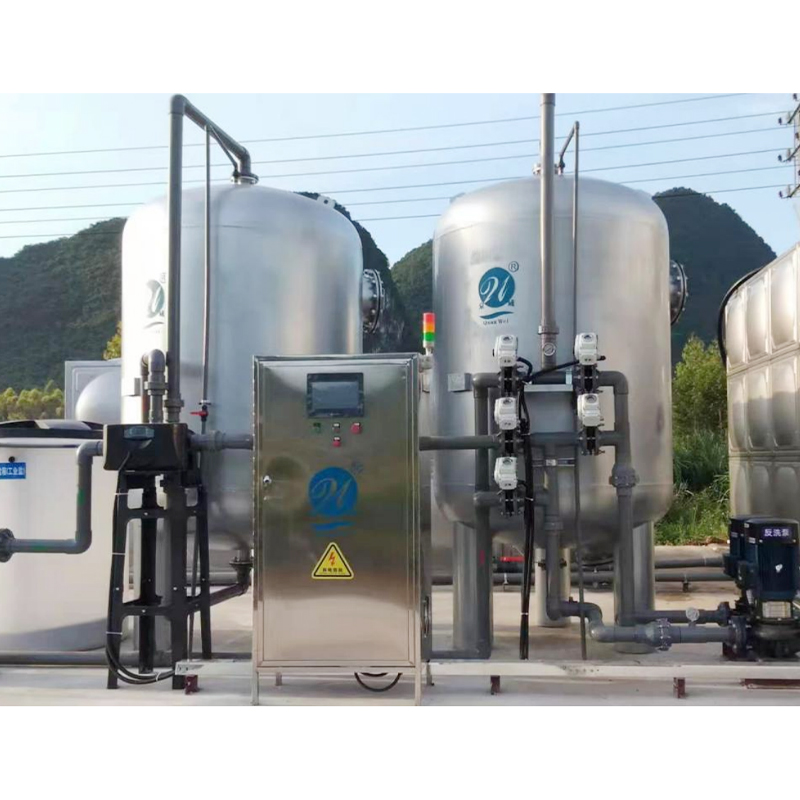How does purified water equipment cope with the challenges of fluctuating water quality from different water sources?
Release Time : 2025-10-02
In industries with extremely stringent water quality requirements, such as beverages, pharmaceuticals, and medical devices, purified water equipment is a key component in ensuring the safety of production water. However, these equipment do not operate in ideal environments. The raw water sources they use can range from municipal tap water, groundwater, surface water, and even recycled water. Water quality fluctuates significantly due to seasonality, climate, geography, and pipe network conditions. Issues such as increased turbidity, changes in hardness, fluctuations in organic matter content, and excessive residual chlorine levels can all threaten the stable operation of purified water systems.
1. Front-end Pretreatment: The First Line of Defense Against Fluctuations
The key to purified water equipment's ability to cope with fluctuating water quality lies in a scientific and flexible pretreatment system. Pretreatment is more than simple filtration; it provides a multi-stage barrier tailored to the characteristics of the raw water. For example, when raw water has high turbidity or contains a high concentration of suspended solids, the equipment is equipped with a multi-media filter to effectively remove large particles such as silt and rust, preventing clogging of the subsequent membrane system. For high-hardness water sources, a softener is standard. Ion exchange resins remove calcium and magnesium ions, preventing reverse osmosis membrane scaling. For residual chlorine, a common problem in municipal water supplies, activated carbon filters are used for adsorption, protecting the reverse osmosis membranes from oxidative damage. Some advanced systems also feature an automatic backwash function, ensuring the pretreatment unit maintains efficient operation despite fluctuating water quality.
2. Core Membrane Technology: The "Heart" of Stable Desalination
Reverse osmosis (RO) technology is the core of purified water equipment, responsible for removing over 95% of ions, organic matter, and microorganisms. The stability of the RO system is crucial in the face of fluctuating raw water quality. Modern purified water equipment generally uses anti-fouling RO membranes, whose surfaces undergo a special treatment that effectively reduces contaminant adhesion and extends cleaning cycles. Furthermore, the system is equipped with precise online monitoring of inlet pressure, flow rate, and conductivity. If raw water quality changes lead to abnormal inlet parameters, the control system can automatically adjust the operating pressure or initiate a low-pressure flush to prevent damage to the membrane modules. In addition, some equipment utilizes a "wide flow channel" design or adds interstage booster pumps to address high-risk water sources, ensuring consistently high desalination rates.
3. Intelligent Control: The "Brain" of Real-Time Response
Addressing water quality fluctuations requires not only hardware but also an intelligent "brain"—an automated control system. Modern purified water equipment is commonly equipped with a PLC or DCS control system, integrating multi-parameter sensors that monitor key raw water indicators such as conductivity, pH, residual chlorine, and pressure in real time. If the system detects a sudden change in raw water quality, it can automatically initiate enhanced pretreatment mode, extend backwash time, or switch to a backup filter unit. Furthermore, the system's data logging and trend analysis capabilities help operations and maintenance personnel predict water quality fluctuations and develop preventive maintenance plans, shifting from reactive response to proactive defense.
4. System Redundancy and Modular Design: Improving Operational Resilience
To address extreme water quality fluctuations, high-end purified water equipment often employs redundant designs. For example, the pretreatment unit is equipped with two sets of multi-media filters or softeners, which can operate alternately or in parallel, ensuring the system maintains normal water supply while one set is being cleaned or regenerated. The modular design provides the equipment with excellent scalability, allowing for flexible additions and subtractions of treatment units based on water source fluctuations, such as the temporary installation of an ultrafiltration (UF) module to address high microbial risk. This design not only enhances the system's adaptability but also reduces the risk of production downtime due to water quality issues.
Managing purified water equipment to address fluctuating water quality from different sources is a systematic project, involving the coordinated integration of pretreatment optimization, core process enhancement, intelligent control, and system design. It is no longer simply a "water purification tool" but an intelligent water treatment system with the capabilities of sensing, judging, and adjusting. Through scientific process configuration and advanced control technology, modern purified water equipment can confidently cope with complex and changing raw water environments, providing beverage, pharmaceutical, and medical device manufacturers with continuous, stable, and high-quality production water, truly serving as a solid guardian of industrial lifelines.
1. Front-end Pretreatment: The First Line of Defense Against Fluctuations
The key to purified water equipment's ability to cope with fluctuating water quality lies in a scientific and flexible pretreatment system. Pretreatment is more than simple filtration; it provides a multi-stage barrier tailored to the characteristics of the raw water. For example, when raw water has high turbidity or contains a high concentration of suspended solids, the equipment is equipped with a multi-media filter to effectively remove large particles such as silt and rust, preventing clogging of the subsequent membrane system. For high-hardness water sources, a softener is standard. Ion exchange resins remove calcium and magnesium ions, preventing reverse osmosis membrane scaling. For residual chlorine, a common problem in municipal water supplies, activated carbon filters are used for adsorption, protecting the reverse osmosis membranes from oxidative damage. Some advanced systems also feature an automatic backwash function, ensuring the pretreatment unit maintains efficient operation despite fluctuating water quality.
2. Core Membrane Technology: The "Heart" of Stable Desalination
Reverse osmosis (RO) technology is the core of purified water equipment, responsible for removing over 95% of ions, organic matter, and microorganisms. The stability of the RO system is crucial in the face of fluctuating raw water quality. Modern purified water equipment generally uses anti-fouling RO membranes, whose surfaces undergo a special treatment that effectively reduces contaminant adhesion and extends cleaning cycles. Furthermore, the system is equipped with precise online monitoring of inlet pressure, flow rate, and conductivity. If raw water quality changes lead to abnormal inlet parameters, the control system can automatically adjust the operating pressure or initiate a low-pressure flush to prevent damage to the membrane modules. In addition, some equipment utilizes a "wide flow channel" design or adds interstage booster pumps to address high-risk water sources, ensuring consistently high desalination rates.
3. Intelligent Control: The "Brain" of Real-Time Response
Addressing water quality fluctuations requires not only hardware but also an intelligent "brain"—an automated control system. Modern purified water equipment is commonly equipped with a PLC or DCS control system, integrating multi-parameter sensors that monitor key raw water indicators such as conductivity, pH, residual chlorine, and pressure in real time. If the system detects a sudden change in raw water quality, it can automatically initiate enhanced pretreatment mode, extend backwash time, or switch to a backup filter unit. Furthermore, the system's data logging and trend analysis capabilities help operations and maintenance personnel predict water quality fluctuations and develop preventive maintenance plans, shifting from reactive response to proactive defense.
4. System Redundancy and Modular Design: Improving Operational Resilience
To address extreme water quality fluctuations, high-end purified water equipment often employs redundant designs. For example, the pretreatment unit is equipped with two sets of multi-media filters or softeners, which can operate alternately or in parallel, ensuring the system maintains normal water supply while one set is being cleaned or regenerated. The modular design provides the equipment with excellent scalability, allowing for flexible additions and subtractions of treatment units based on water source fluctuations, such as the temporary installation of an ultrafiltration (UF) module to address high microbial risk. This design not only enhances the system's adaptability but also reduces the risk of production downtime due to water quality issues.
Managing purified water equipment to address fluctuating water quality from different sources is a systematic project, involving the coordinated integration of pretreatment optimization, core process enhancement, intelligent control, and system design. It is no longer simply a "water purification tool" but an intelligent water treatment system with the capabilities of sensing, judging, and adjusting. Through scientific process configuration and advanced control technology, modern purified water equipment can confidently cope with complex and changing raw water environments, providing beverage, pharmaceutical, and medical device manufacturers with continuous, stable, and high-quality production water, truly serving as a solid guardian of industrial lifelines.







